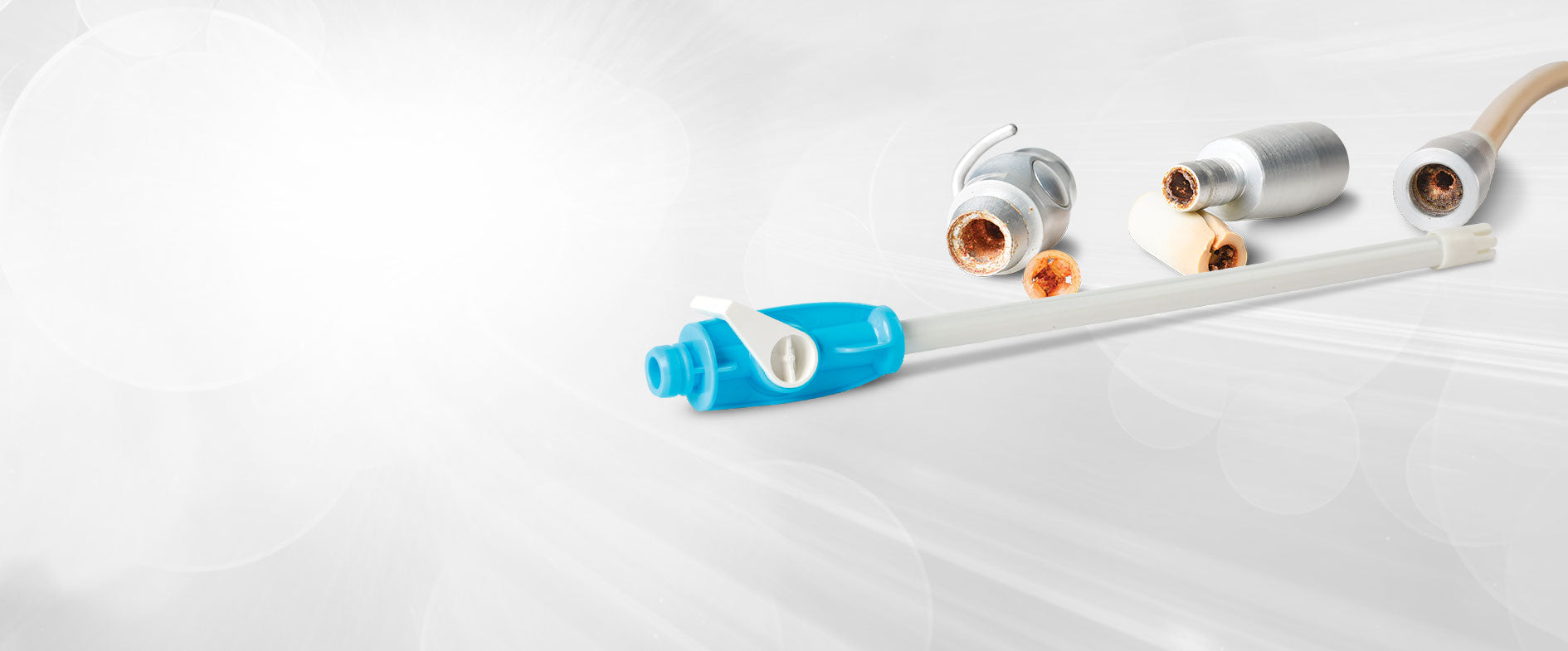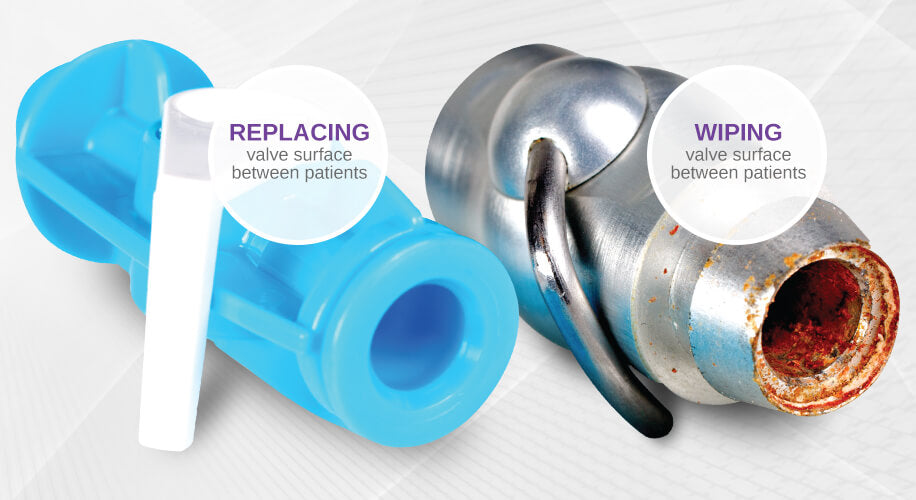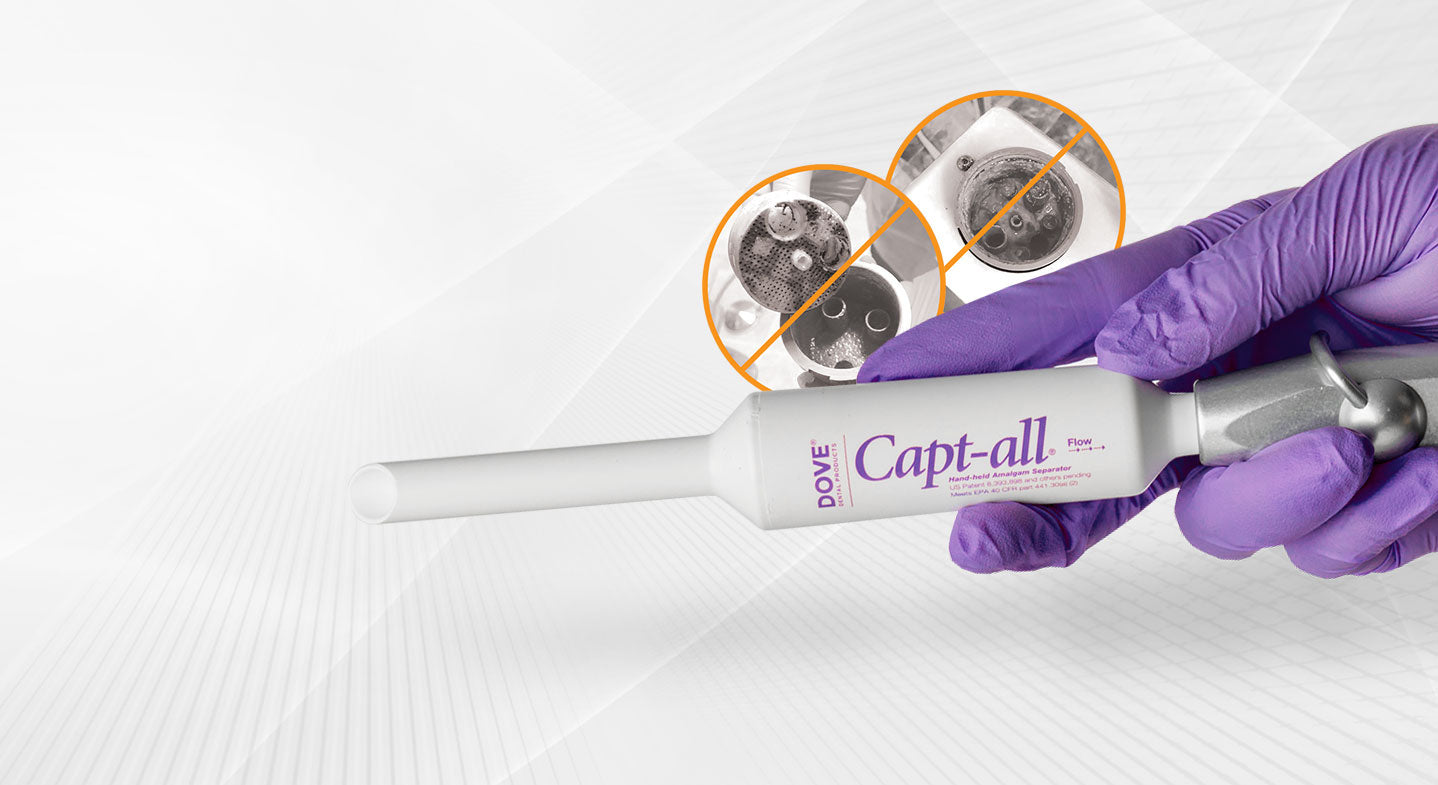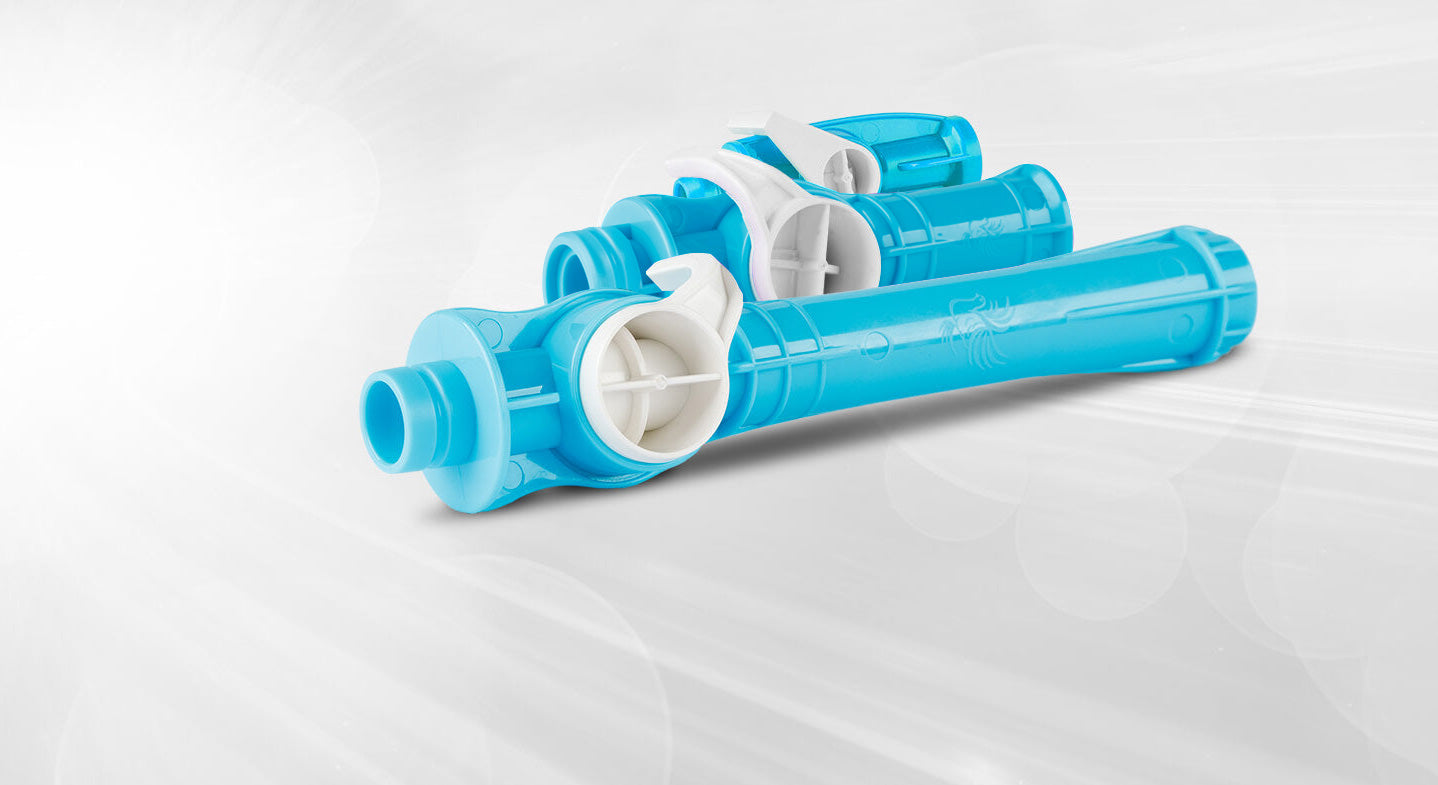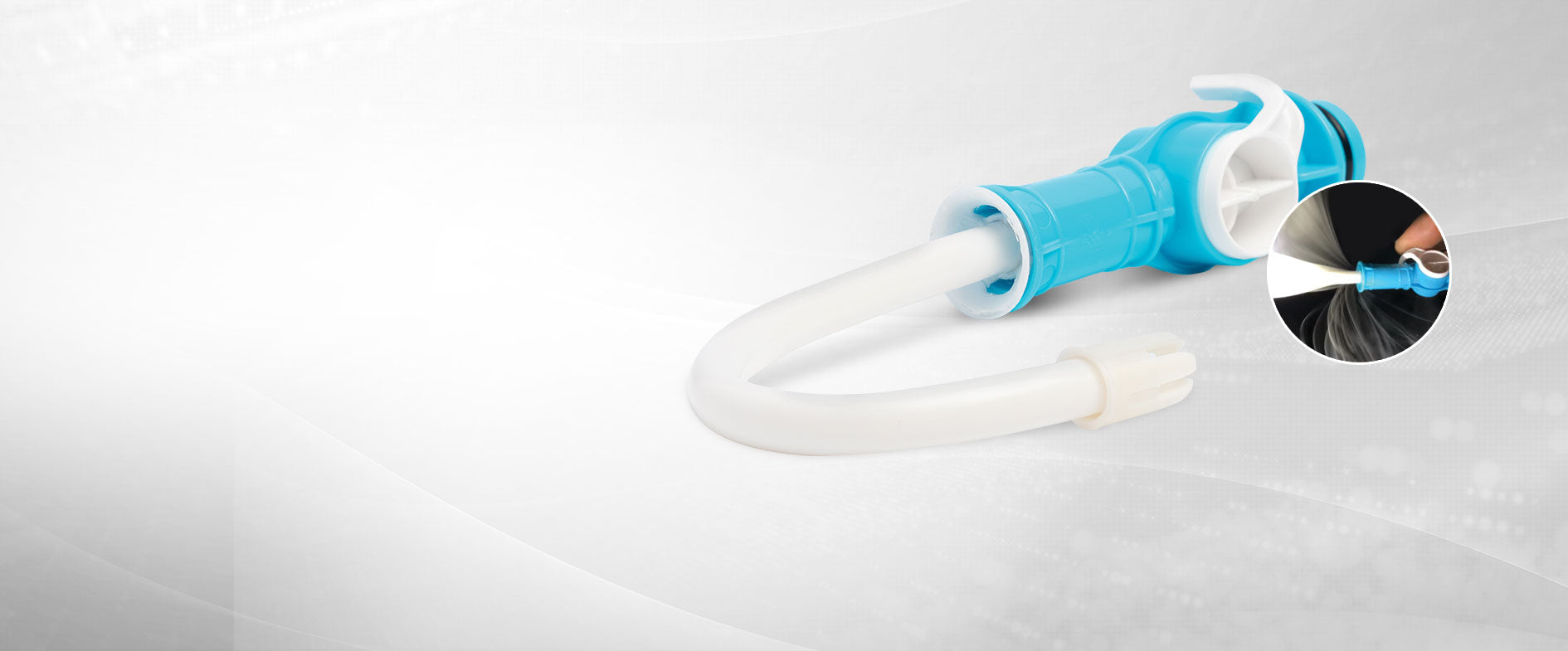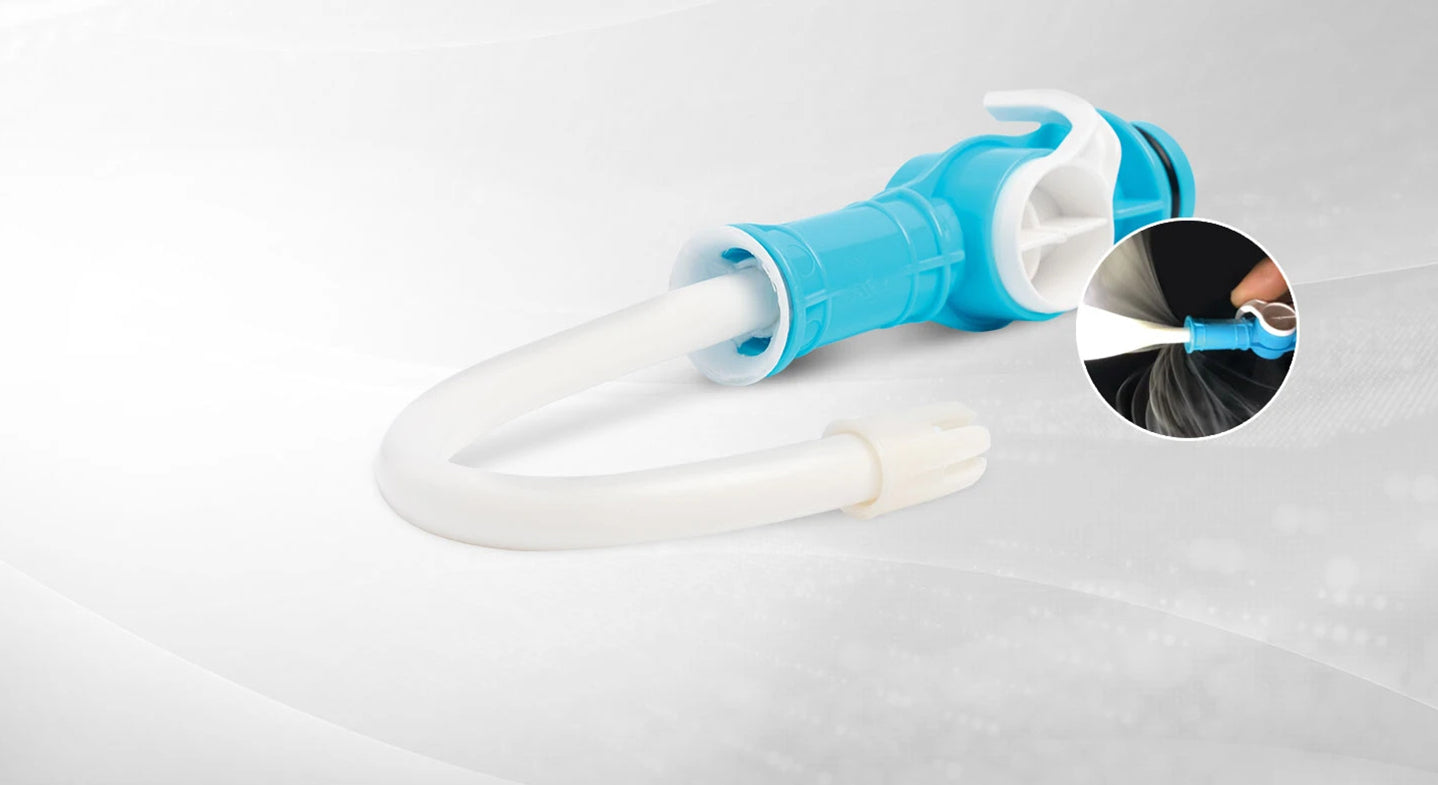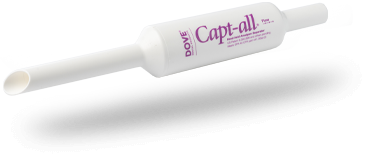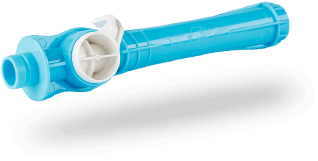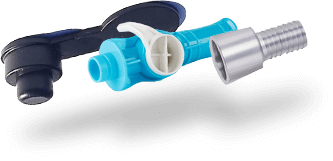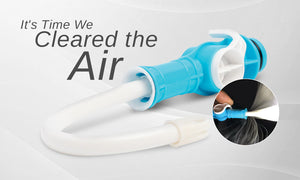Order your FREE product sample today!
Order NowThe Risk of Backflow and Leakage
-

Saliva Ejector Backflow
Backflow occurs when previously suctioned fluids present in the suction tubing flow back into the patient’s mouth.
-

Evacuation valve leakage
Research concludes dental offices do not inspect, change, or clean o-rings. Connection surfaces become compromised, resulting in leaking either by seepage or bubbling of saliva and liquids.
Eliminate Cross Contamination with DOVE Dental Products
DOVE® Disposable HVE and Saliva Ejector Backflow Prevention Valve devices are simple to install and intuitive with performance. They offer outstanding performance each use without need for repeated sterilization or autoclaving.
-

New curved
turret handle -

Our standard connection
accommodates most dental units -

New rounded neck
for comfort -

Tapered interior end ensures
secure hold of all size tips
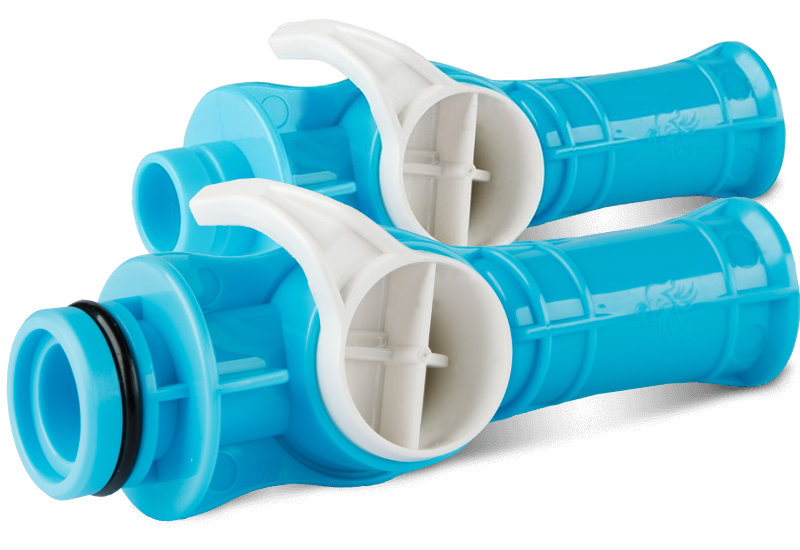
“ As a member of OSAP and a safety manager in private dental practice for 43 years, my goal has been to see HVE’S and SE’S changed between patients. Dove’s efforts in pioneering the use of disposable ones is commendable. Now they developed the Dove Aero! This is a great advance..... ”
“ DOVE® finally provides a product to give me peace of mind when patients close around the suction straws... ”
“ I just used the Capt-all for the 1st time today and I am really pleased with how it worked for my needs. I will be ordering more and I will need information on the amalgam recycle Capt-all container... ”
“ Since I began using the Dove widemouth HVE I can’t imagine working without it. The lightweight, shorter design with the flared end make it practical and easy to use solo, during all aerosol generating procedures. The tip design is perfect for retraction and doesn’t suck up the patient’s cheeks and..... ”
“ With these disposable valves, we eliminate the risk of backflow and ensure each patient received the cleanest possible dental visit... ”
Recent Blog Posts
Your Everyday Decisions Are More Important Than You Realize
Swab Test Case Study
I was asked to perform an informal case study on dental office evacuation valves. This was a challenge in many ways. Several offices I contacted were leery to allow swab testing in their offices even though they said they felt confident of their disinfection process. My infection control flag went up many times in those practices. If they felt confident, why are they leery of doing a simple swab test? What was the risk to them? One office wanted to check with his lawyer, wanted my license, and much more seeming ridiculous information. The offices that were welcoming wanted to know how they could improve their infection prevention protocol. A big benefit was they received bags of disposable valves for allowing testing of their disinfected valves.
Testing was done to determine if the valves were contaminated even after disinfection. What are the consequences of the unknown invisible organic matter? What pathogens are nesting here? When disinfected what pathogens are being reduced or present?
As an experienced infection prevention and safety specialist, I performed the swab-testing. After reviewing the results, I was glad I had donned the appropriate PPE. Yet maybe I should have worn a hazmat suit!
The Down and Dirty Results
I processed 212 valve surfaces and determined they were YES contaminated after a routine disinfecting protocol. Discovering the bacterial load on dental unit vacuum valves left me with an uneasy feeling. Are we creating a healthy environment for our patients? Occupational Safety, Asepsis and Prevention (OSAP) has repeatedly stated that dental patients should be in a safe dental environment which includes the entire dental facility and all the processes.
Just to begin to discover where problems happen, the first question should be if the valves were disinfected according to manufacturer’s instructions? Metal valve companies recommend routine disassembly, scrubbing and reprocessing of the surfaces between patients. Minimal industry standard between patient protocol should be to:
- Wipe once to clean
- Wipe a second time to disinfect

Saliva ejector and Backflow Risks
It’s not new information that back flow from low-volume saliva ejectors is happening. Research has shown that when a patient seals their lips around the tip of the salvia ejector, backflow can occur via the pressure created in the patient’s mouth. Studies report that gravity pulls fluid back toward patient’s mouth when tube positioning is above the patient’s mouth or when both high or low suction is used at the same time. Unfortunately, like not going in the water for 30 minutes after eating myth, we have taught our patients to close their lips around the saliva ejector.
The CDC recommends that the dental community advise their patients not to close their lips around the saliva ejector. CDC concluded that research confirms the significant risk in backflow with microbial cross contamination between patients.
Is your office using old, outdated operating procedures that are as myth based as watermelon seeds germinating in your stomach? Updated written policies and procedures are a must for any dental setting. Standard Operating Procedures (SOP) can be used for training and OSHA safety purposes. These policies should be reviewed on an annual basis. Check lists are powerful reminders of what might be forgotten in daily routines. (Go to http://www.oshatrainingbootcamp.com to find checklists and more.)
Replace the Old with the New
Replacing an old car with a new car increases safety with airbags, hands free phone connection and camera’s in the rear panel to prevent from hitting a child or running over a bicycle. The prevention is worth every penny. Valves are now available to keep patient’s safe in any dental facility. New disposable versions are clean and offer backflow prevention. We need to protect our patients from microbial biohazardous debris and possible transmission of disease via backwash. The Hippocratic Oath and professional ethics standards demand that we first, do no harm.
About the Author

Mrs. Pat Pine, RDH is a national and international speaker specializing in OSHA, infection control, lasers and orofacial myology. She brings thirty years of experience in dentistry to provide exciting and evidenced based programs. Pat believes that safety, infection control, and whole health are important to providers and patients alike. Her philosophy is an empowered team is a healthy team, which in turn creates an unstoppable referral formula. Ms. Pine conducts in-office trainings, boot camps, online seminars, and dental/dental hygiene conventions. She is a member of OSAP speaker's/consultant's bureau and publishes regularly in several dental magazines. Pat reminds others that education doesn't stop at clinical treatment. It is an on-going process to enrich ones-self and bring the highest quality of care to patients. Pat can be reached at info@oshatrainingbootcamp.com
DOVE® Dental Products introduces single-use hybrid device with aerosol management to combat the spread of COVID-19
DOVE® Dental Products announces the release of the new DOVE® AERO, a single-use hybrid device designed to significantly reduce the risk of airborne aerosol movement caused by instrument use in a dental setting.
The threat from COVID-19 has prompted oral health professionals to rethink their infectious disease protocol to mitigate the spread of contagions in three areas: evacuation, backflow, and aerosol management. With the introduction of the new AERO product, DOVE Dental Products is leading the charge. To date, no device on the market addresses all three concerns without sacrificing patient comfort or altering dental practices. According to the Guidance for Dental Settings published by the Centers for Disease Control and Prevention (CDC), “…if aerosol-generating procedures are necessary for dental care, use four-handed dentistry, high evacuation suction and dental dams to minimize droplet spatter and aerosols.”
DOVE® AERO’s innovative design addresses these concerns by combining the power of high-volume ejector (HVE) suction with the safety of a one-way backflow protection, using a secured saliva ejector (SE) for patient comfort and easier access. The AERO features a patented 360 ° external aerosol chamber to effectively manage airborne particles of up to 95 percent when combined with internal fluid evacuation.
“We are extremely excited to introduce the new DOVE® AERO HVE Backflow Prevention Valve,” said Jim Langeloh, Vice President of Sales. “It’s the first valve of its kind to offer external aerosol collection, backflow protection, and HVE power while providing patients with the comfort of using a saliva ejector.”
DOVE® AERO is a simple, cost-effective solution for oral health professionals to manage the spread of COVID-19 using instruments with which they are already familiar. “It’s the valve that does not compromise comfort, performance, or dental office space,” Langeloh added.
DOVE® Dental Products is dedicated to developing and distributing innovative, cost-effective disposable oral evacuation devices that prevent backflow and eliminate cross-contamination between patients. DOVE® products are simple to install and intuitive with performance with no need for sterilization or autoclaving. All DOVE® products are Made in the USA and manufactured in ISO 13485 facilities.

